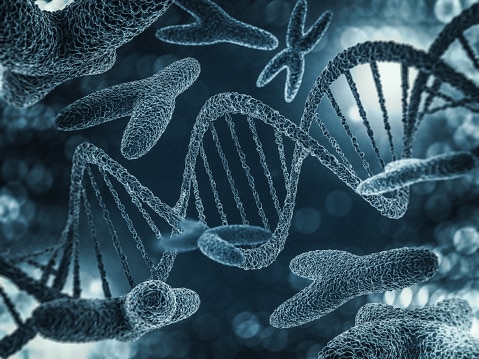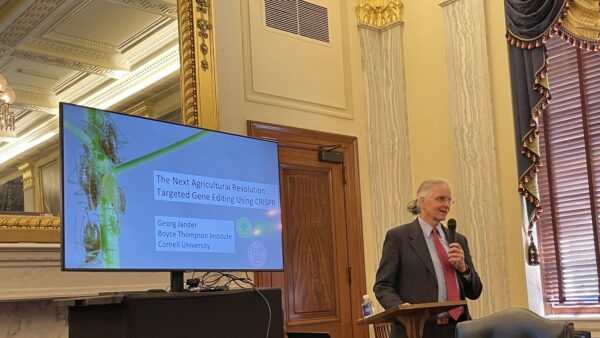New genes that improve crop yields are a dream come true for plant geneticists, but Cold Spring Harbor Laboratory Professor and HHMI Investigator Zachary Lippman warns that a single gene might not cut it for every crop.
Research reported in Nature Plants and conducted by Lipman, former postdoc Cao Xu (now at the Chinese Academy of Sciences in Beijing) and colleagues discovered closely-related genes in the genome play a major role in the effectiveness of duplicated genes.
Gene duplications are found in many plants and support the original gene as “back-up copies.”
Gene duplication has successfully enhanced crops in the past. In fact, “recent whole-genome duplications that have occurred in the lineages of several domesticated crop species, including wheat (Triticum aestivum), cotton (Gossypium hirsutum) and soybean (Glycine max), have contributed to important agronomic traits, such as grain quality, fruit shape, and flowering time,” stated a topical review by the Genetics Program and Department of Plant Biology at Michigan State University.
Therefore, Lippman and his team were surprised to find that one gene is not enough to predict the outcome of planned changes, stated a Cold Spring Harbor Laboratory press release.
“The lack of predictability in the context of a duplicate gene really needs to be an eye-opener for designing crop improvements,” Lippman explained, according to the press release.
Lippman’s Study
The study focused on the gene clv3. This gene makes a protein that limits the growth of maturing plant tissues.
Past research proved mutations in clv3 can lead to higher yields in domestic plants. Take tomatoes for example. When introduced to mutations, larger fruits with more seed sections were produced.
Researchers introduced equivalent mutations to the clv3 gene in tomato, tobacco, ground cherry, and petunia plants, all members of the Solanaceae family. Lippman and his team anticipated similar results but were taken aback with what they discovered.
In tobacco, the mutation resulted in dramatic effects with certain growth regions doubling, “due to the plant’s loss of the clv3 back-up gene,” stated the press release. The tomato saw more moderate effects.
Mutated clv3 had little effect on the ground cherry and petunia. “Both plants had clv3-like genes that compensated for the changes made by the researchers to the clv3 gene,” explained Cold Spring Harbor Laboratory in the release.
Based on his findings, Lippman believes that taking an inventory of duplicated genes might be essential in order to optimize crops through genome editing.
“Crop developers need to understand how important genes were duplicated, deleted, and changed over evolutionary time. This allows scientists to develop more predictable crop improvements,” Lippman concluded.
Read More About Genome Editing:
J.R. Simplot Company and Plant Sciences Inc. Collaborate on Gene Editing of Strawberries
Bioheuris Partners with GDM to Develop Crop Management System in Soybeans Using Gene Editing
Origin Agritech Ltd Utilized Gene Editing Technology to Create New Corn Traits










